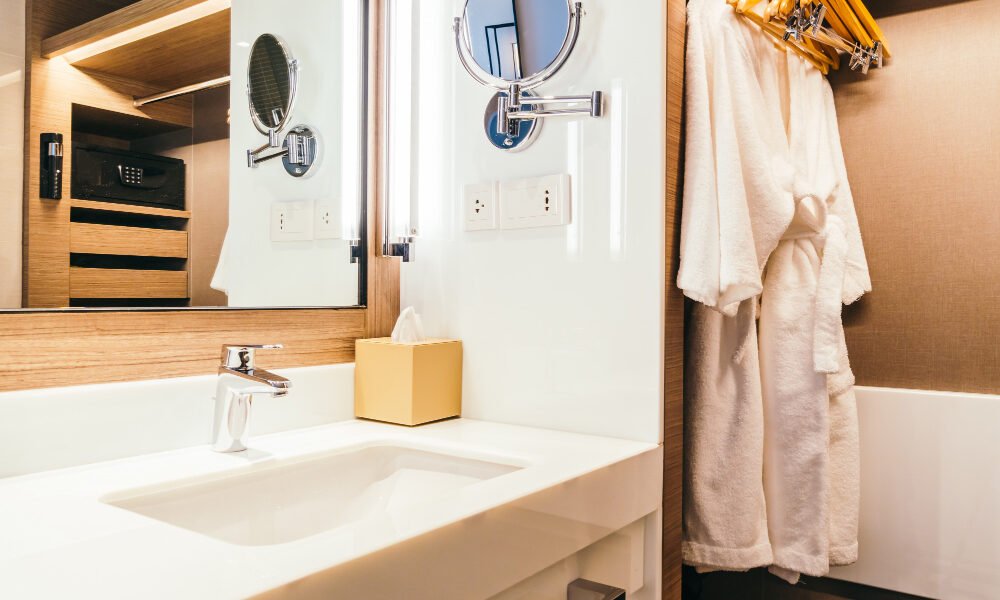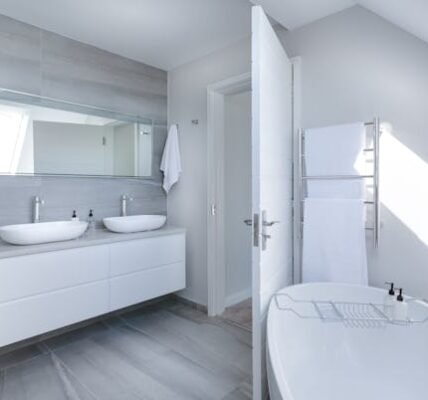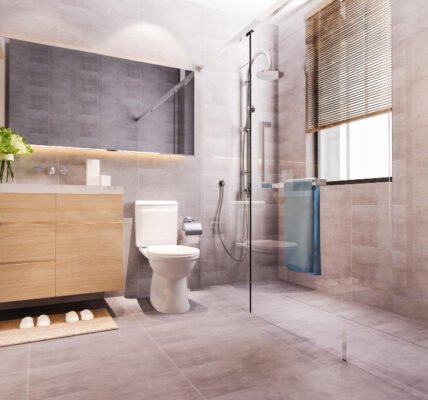Minimalist design is more than an aesthetic—it’s a lifestyle choice. For homeowners seeking calm, functional bathrooms, a how to install a bathroom vanity resource can guide the technical process, but the bigger question is: how do you select a vanity that aligns with a minimalist home?
The Core Principles of Minimalist Vanities
- Simplicity of Form: Straight lines, no ornate detailing.
- Neutral Palettes: Whites, blacks, grays, or warm light woods.
- Open Space: Floating designs to keep the room feeling larger.
- Function Over Ornament: Every drawer, shelf, or handle should serve a clear purpose.
By stripping away excess, you create a space that feels open and restorative.
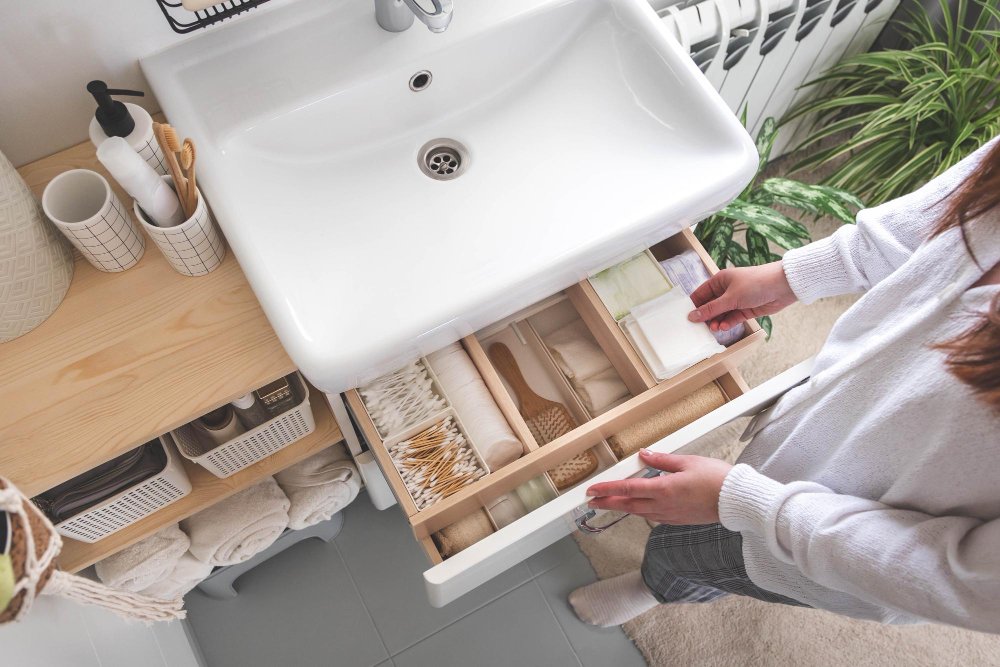
Popular Minimalist Vanity Styles
Floating Vanity
- Mounted on the wall, leaving floor space visible.
- Perfect for small or medium-sized bathrooms
Integrated Sink Vanity
- Countertop and sink formed as one seamless piece.
- Eliminates edges and reduces visual clutter.
Open Shelf Vanity
- Minimal cabinet bulk.
- Offers open storage for neatly folded towels or baskets.
Slimline Vanity
Keeps footprint small without sacrificing usability.
Narrow depth for compact bathrooms.
Materials That Match Minimalism
- Natural Wood Veneers: Light oak, ash, or bamboo for subtle warmth.
- Matte Finishes: Non-reflective surfaces that calm the eye.
- Quartz or Concrete Tops: Clean, uninterrupted slabs that resist stains.
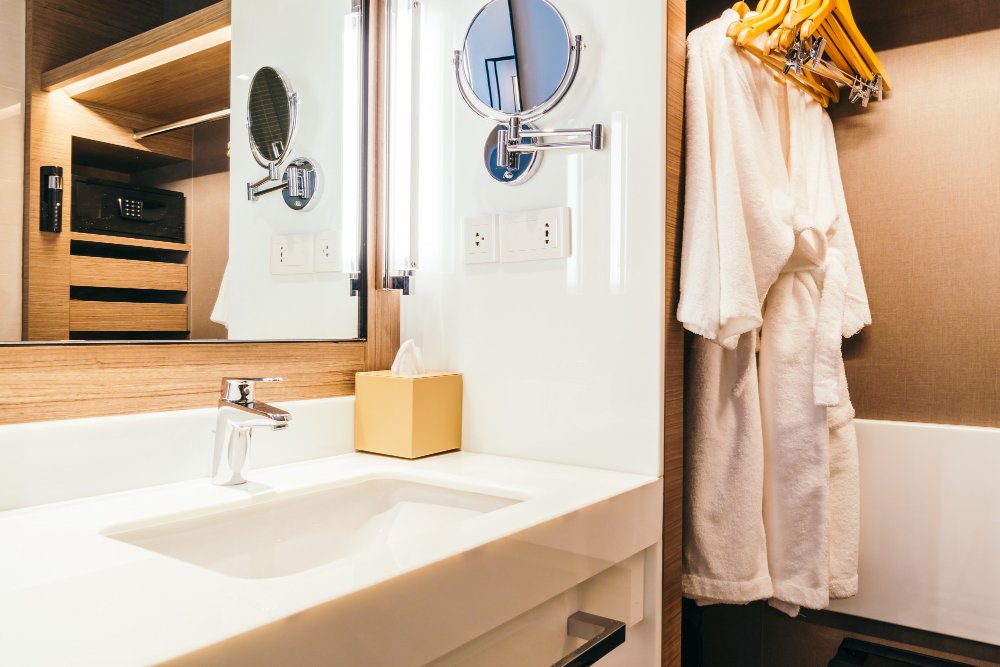
Avoid heavy grains, glossy lacquers, or elaborate hardware.
Layout and Flow
Minimalist vanities work best when integrated into thoughtful layouts:
- Position to maximize movement between shower, toilet, and vanity.
- Use recessed mirrors with storage to reduce countertop clutter.
- Pair with soft, hidden lighting rather than statement fixtures.
The goal is harmony—where every element feels intentional.
Maintenance Advantage
Minimalist vanities aren’t just visually lighter—they’re easier to maintain. With fewer seams, grooves, or hardware, surfaces are simpler to clean and keep looking new.
Read More in Homes Holder Blog
- Pros and Cons of Hardie Board Siding: Luxury Finishes, Texture, and Timeless DesignHardie board siding offers the perfect marriage of luxury design and endurance. From elegant textures to fade-resistant finishes, this material redefines high-end curb appeal that stands the test of time.
- Guide to Bathroom Vanity: Clean, Minimalist Options for Modern BathroomsMinimalist bathrooms rely on clean lines, neutral colors, and efficient layouts. This guide explores vanity options like floating, integrated sink, and slimline designs, as well as material choices that enhance simplicity and flow. The result is a bathroom that feels calm, functional, and beautifully modern.
- Hardwood Flooring or Something Else? Here’s Why You Should Act FastWith material costs on the rise and skilled installers in high demand, homeowners considering new floors need to move fast. In this comparative, expert-driven guide inspired by Bob Vila, we break down how hardwood flooring stacks up against laminate, vinyl, and engineered wood. From durability and resale value to installation timelines and ROI, you’ll learn exactly why hardwood remains the gold standard—and why acting now could save you time, money, and missed opportunity.
Wrap-Up
Minimalism doesn’t mean bare or boring. A well-chosen vanity can make your bathroom serene, modern, and highly functional. The key is to emphasize simplicity, light, and openness.
👉 Thinking of upgrading? Work with a remodeler who understands minimalist principles to ensure your vanity enhances both style and flow.

